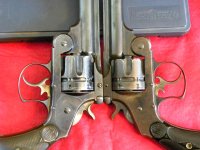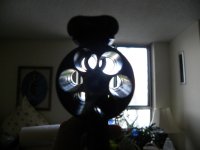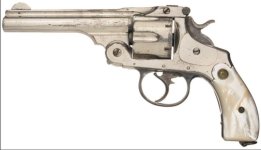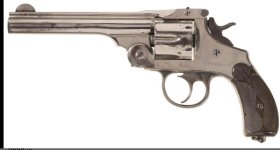BlueOvalBandit
Member
Let me preface this isn't my firearm, it's a law enforcement pickup and I'm just doing the forensics/ballistics on it and I can't accurately determine if it's .44 Russian or .44-40.
I don't have .44 Russian in my lab, but I do have .44 Special and its a pretty sloppy fit regarding it's base diameter. .44-40 fits, still sloppy compared to modern standards but it's closer. The cylinder throats look like its cut for .44-40. Before I decide to test fire or write it off I figured I'd consult the experts. Especially since I still don't know whether it's called a First Model DA or a First Model New Model Navy No. 3. based on the internet findings.
So the big question, were these originally made in .44-40?
It's a sad piece, s/n is pretty low at 41xx, but its been beat to hell.
I don't have .44 Russian in my lab, but I do have .44 Special and its a pretty sloppy fit regarding it's base diameter. .44-40 fits, still sloppy compared to modern standards but it's closer. The cylinder throats look like its cut for .44-40. Before I decide to test fire or write it off I figured I'd consult the experts. Especially since I still don't know whether it's called a First Model DA or a First Model New Model Navy No. 3. based on the internet findings.
So the big question, were these originally made in .44-40?
It's a sad piece, s/n is pretty low at 41xx, but its been beat to hell.







